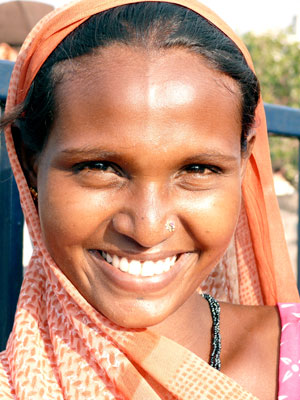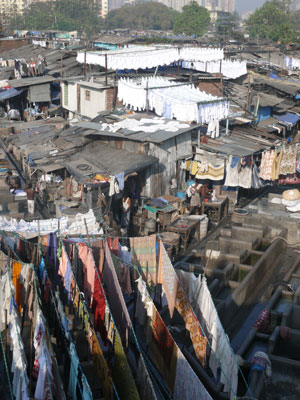MUMBAI - There is much to do and see in this giant city of 18 million people but our guide Douglas Cyrus insists there is one sight that will impress us more than any we have seen during a fabulous day tour of India’s largest metropolis.
The scholarly-looking Cyrus has introduced us to many of the city’s wonders so we trust his “top choice” will not disappoint. Our expectations are high as our driver weaves his van through the city’s chaotic streets ruled by 55,000 small black and yellow taxi cabs that look like they’re props from a ’40s movie.
Soon we reach a railway overpass and the driver stops.
As usual, a mob of street hawkers attacks the vehicle trying to pry a few rupees from the tourists for their imaginative wares. A few other tourist vans have beaten us to the spot where the air is punched with the smell of burning wood.
“Come this way,” Cyrus says as he leads us to a spot overlooking what first appears to be a giant shanty town nestled beside Mumbai’s main railway line leading to historic Victoria Terminus.
“Welcome to the world’s largest laundry,” says Cyrus, leaving us bewildered for a moment.
The vast outdoor area stretches for many city blocks and is divided into hundreds of cement cubicles. Thousands of pieces of laundry hang from crude lines scattered about the complex. Everywhere men are beating clothes against the stone walls of the cubicles.
“What is going on?” we finally ask our smiling guide.
“This is Dohbi Ghat, which in my humble opinion is the most spectacular attraction in Bombay (residents here still tend to call this city by its name under British rule instead of Mumbai),” says Cyrus.
Dohbi Ghat was established 100 years ago by the city as a place neighborhood entrepreneurs could set up their small laundry shops. Now, more than 10,000 work here – and they’re all men.


Left: Pretty women greet visitors at laundry and try and sell them souvenirs. Right: Women gather clothes in the neighborhoods and then bring them to the outdoor laundry.
“Men have been doing the hard work from the time Dohbi Ghat opened,” Cyrus tells us as we watch one man scrub some clothes into a lather on a stone slab while another rinses some jeans in water and then slams them three times against the cement walls.
The shirts hanging from the lines are the whitest we’ve ever seen.
“No one knows how they get the shirts so white but even my mother was impressed when I brought her here.”
Women go into the neighborhoods to collect the clothes for cleaning and the men take over from there.
“What’s truly amazing about this laundry is that one man can handle up to 800 pieces of clothing a day and never misplace any of it,” says an obviously impressed Cyrus. “They use an ingenious method of coding the clothes with a marker and nothing ever goes missing.”
After the clothes are delivered and cleaned they are returned to the customer within three days. The charge is just a few rupees per item and the results would make any modern day laundry blush.
It’s hard to tear yourself away from Dohbi Ghat but the small platform used as a vantage point by tourists quickly fills up and the crush of hawkers only adds to the confusion.
Mumbai is not known as the cleanest city in the world but in Dohbi Ghat 10,000 men are trying desperately to clean things up.
About the Author
Marc Atchison is a veteran journalist and a seasoned traveller with more than 20 years of travel writing experience. As the former Travel Editor of the Toronto Star, Canada's largest newspaper, and now Editor-in-Chief and Senior Writer for TraveLife magazine (Canada) and travelife.ca, Marc has been to over 100 countries in the world. Japan is one of his favorite destinations and he's been there on numerous occasions.